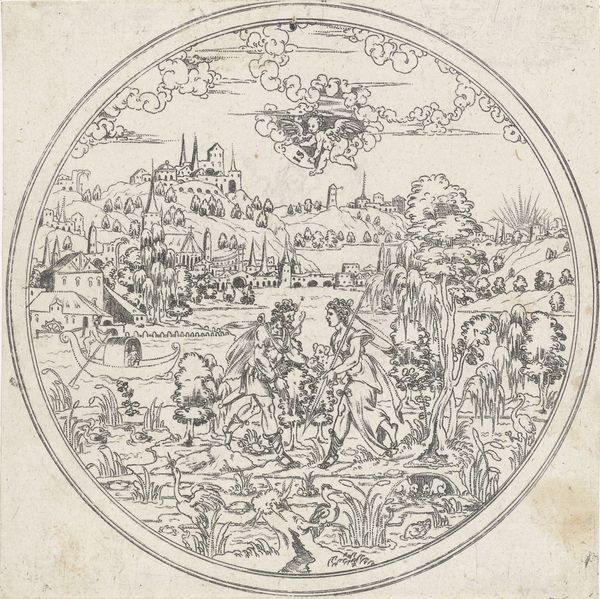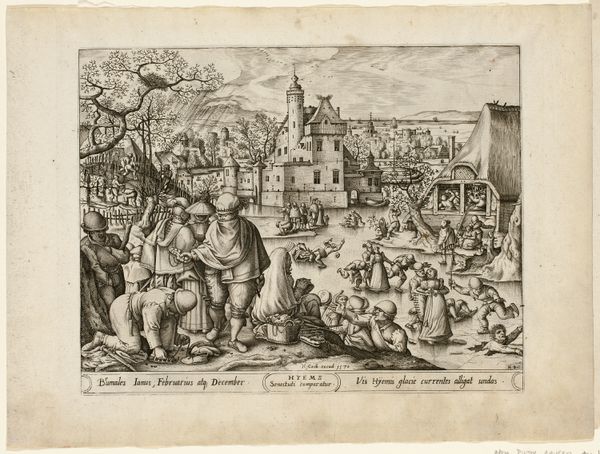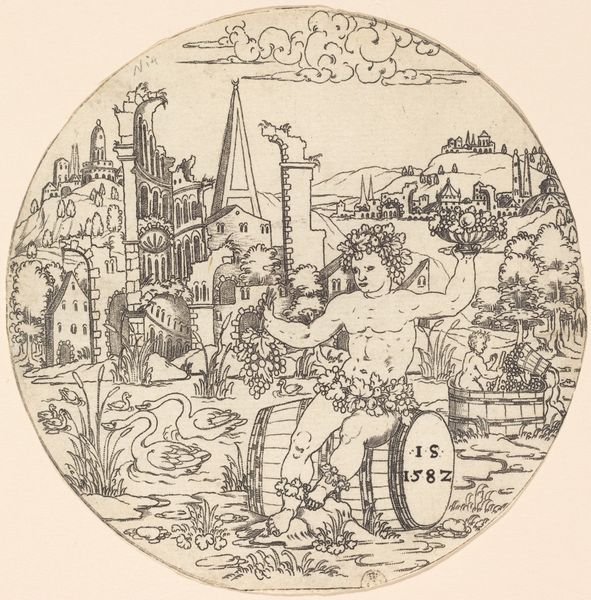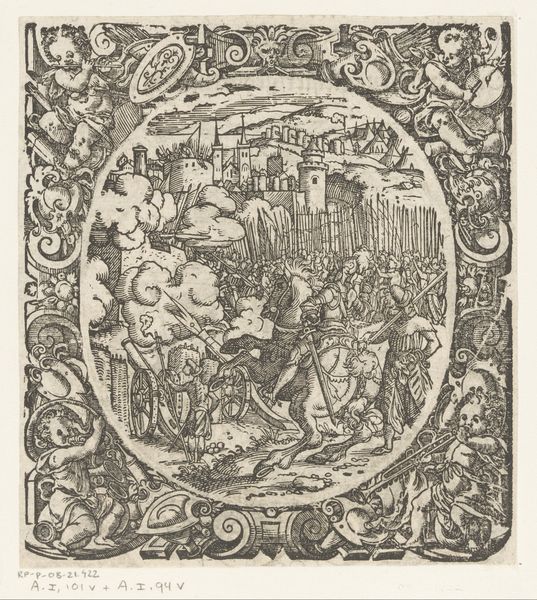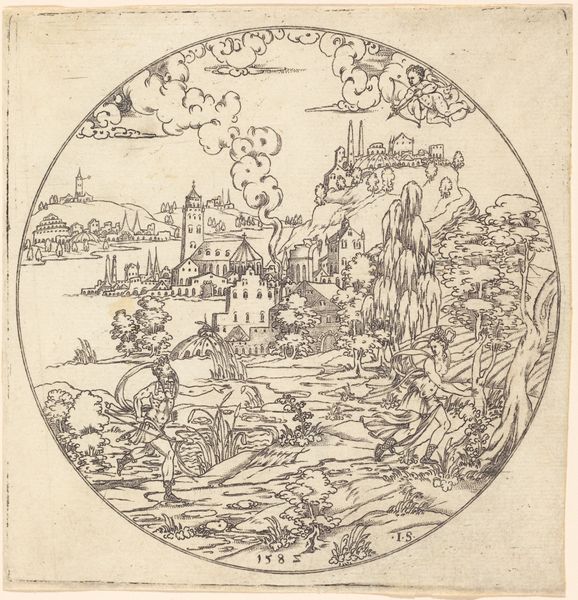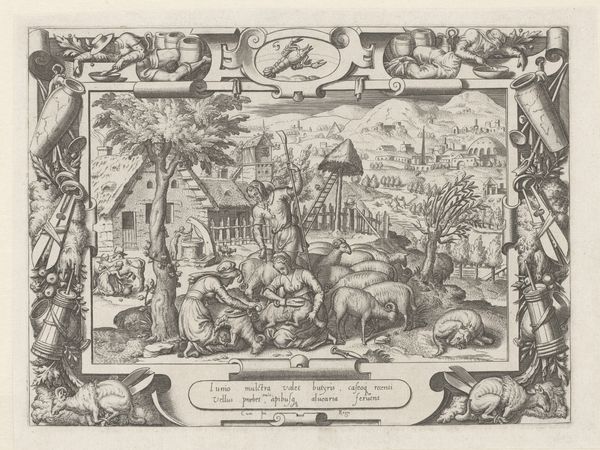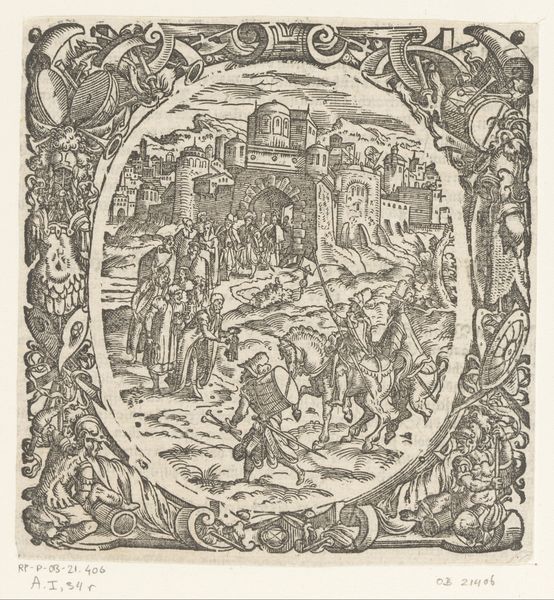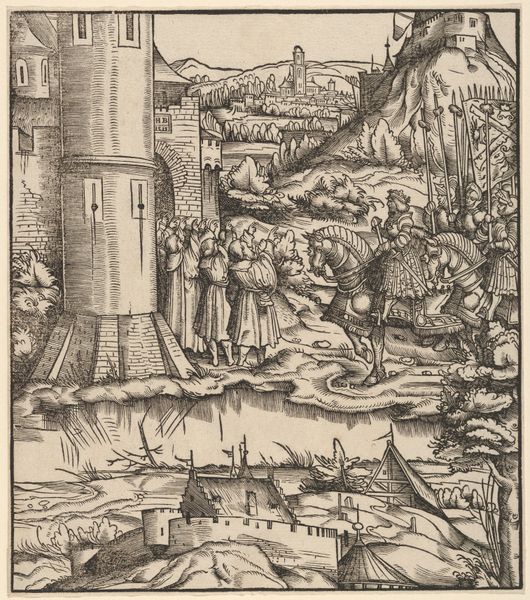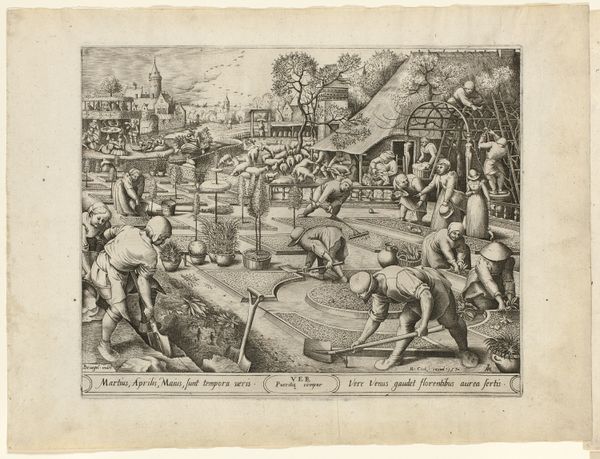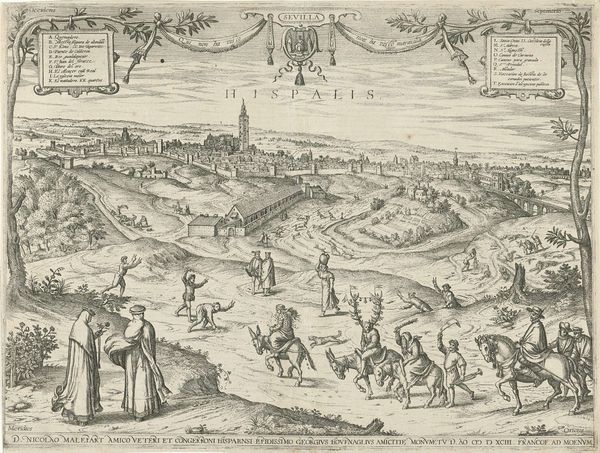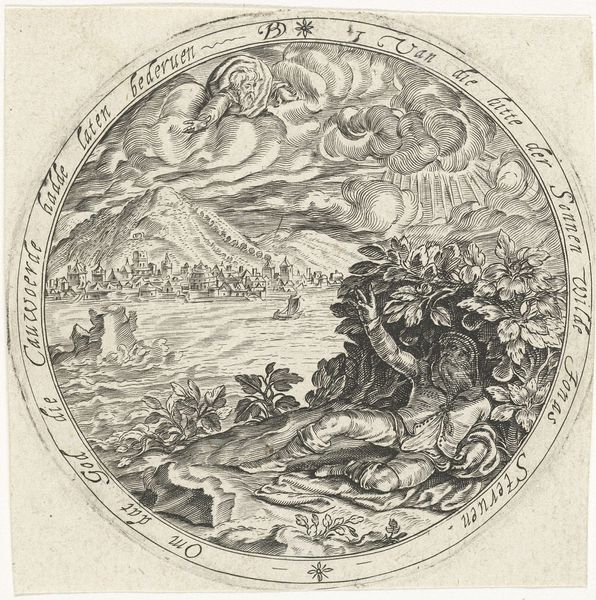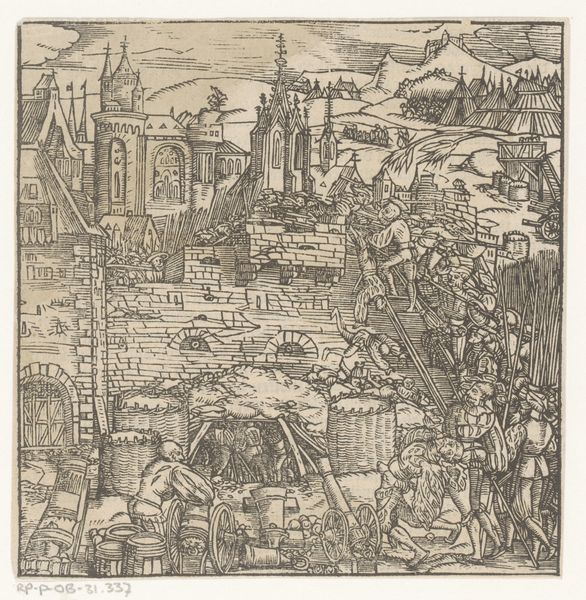
print, engraving
# print
#
landscape
#
figuration
#
history-painting
#
northern-renaissance
#
engraving
Copyright: Rijks Museum: Open Domain
Editor: So, this print is titled "Silenus" from around 1572 to 1582. It's an engraving by Jonas Silber, and it depicts quite the scene... very chaotic, yet detailed. There's this sense of ancient revelry mixed with architectural ruins. What do you see when you look at this work? Curator: I notice the dense composition, organized in a circular format, which is a form that provides both structure and implies cyclical movement, doesn’t it? Note the way Silber has layered foreground, middle ground, and background – all teeming with figures and details, leading the eye on a constant journey. Editor: Yes, I hadn’t quite noticed the layering, but that makes sense with so much to take in. What about the figures? Do you read them as primarily allegorical or…? Curator: More than likely allegorical, yes. But what draws the eye, isn’t the meticulous detail of the engraving technique, allowing Silber to create an impressive range of textures and tones within the monochromatic palette? Observe how he renders the flesh of the figures in contrast with the hard, linear quality of the architecture. Editor: The contrast is striking. The softness of the bodies set against the rigid stone. Does the architectural setting change how we see the figures? Curator: The architectural ruins lend a sense of history and decay. Consider how the human forms, engaged in bacchanalian activity, interact with these remnants of past civilizations, raising questions about the transience of earthly pleasures versus the endurance of art. Wouldn’t you agree? Editor: Absolutely! It's like a visual poem about time, pleasure, and the remnants they leave behind. This has been incredibly insightful. Thank you! Curator: My pleasure. By analyzing its structure and visual language, we can understand the print on a deeper level, appreciating its complexities beyond a surface reading.
Comments
No comments
Be the first to comment and join the conversation on the ultimate creative platform.
